ASUS Maximus III Extreme - P55 for $349
by Rajinder Gill on April 26, 2010 1:32 AM EST- Posted in
- Motherboards
Nothing special to report against other P55 boards, we all know the drill by now:
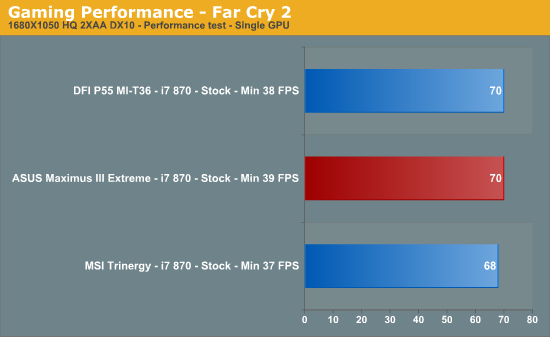

Power Consumption
Our power consumption testing utilizes the same batch of components under similar circumstances in a bid to monitor variances between idle and CPU load conditions. We install the vendor supplied power saving utilities on each board and enable power saving modes that don't involve any kind of underclocking or CPU core frequency modulation in order to run an apples to apples comparison.
ATX PSU switching losses are absent from our figures because we monitor power consumption directly at the DC rails of the PSU. These figures measure only the CPU, motherboard and memory DC power draw and exclude any other peripherals such as 12V ATX power draw for the graphics card, or any power for case cooling fans and hard drives etc. Actual AC power consumption for the motherboard will be anywhere from 15~40% higher than these figures depending upon the efficiency of your power supply.
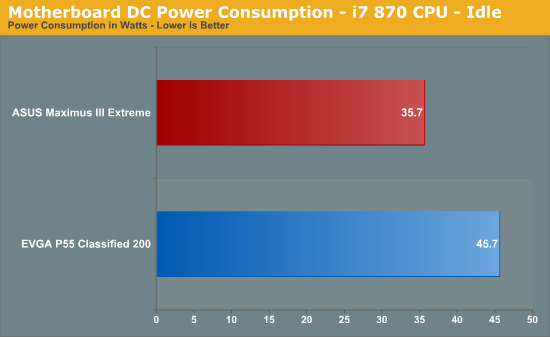
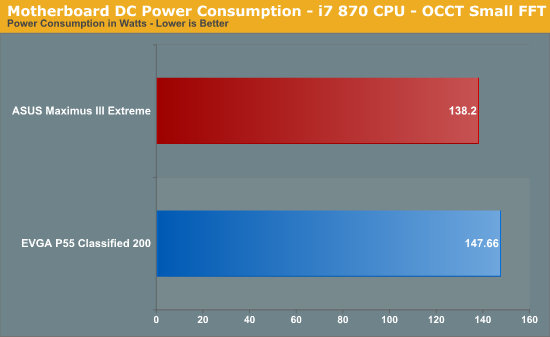
The ASUS M3E comes out on top in both idle and full load conditions due to a more efficient VRM for VCC. Minimum switching frequency on the ASUS board is 250KHz, compared to the Classified's 800KHz 10 phase Volterra solution.
Overclocking
Using air and water cooling, most P55 boards are on an even keel, it’s all about the CPU. Our retail i5-750 and i7 - 860 both reached the same frequencies on this board as they have on everything we’ve tried them on before:
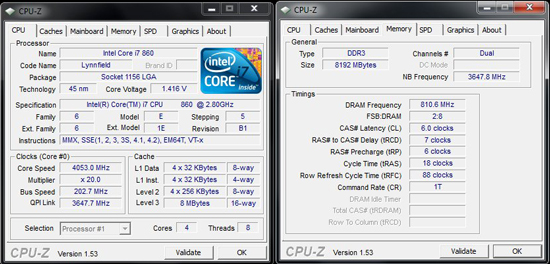
The retail CPU’s aren’t that good, so we checked out what was possible with a good ES just to make sure everything is a-ok.

4.4GHz will pass Linpack under watercooling with this chip, and on the M3E we got that pretty easily, we’re limited by temps here because we’re hitting temps in the mid 80 Celsius region under full load.
We also made some compares using sub-zero cooling using a dual rotary cascade. The testing itself was just basic enough to find maximum frequencies in both heavy-load and light-load synthetic benchmarks. Like other boards out there, cold booting Clarkdale processors requires the modification of the onboard PEGR BIAS compensation resistor either by shorting it or replacing it with a potentiometer and dialling down to a usable value. This late in the game, we were expecting ASUS to have addressed this with a litte finesse or some kind of control via a GPIO. Be prepared to sue a little conductive ink if you want to benchmark this board below -100 Celsius.
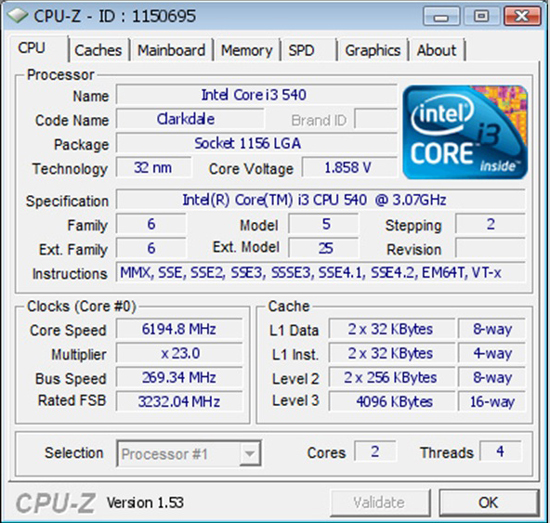

During heavy load benchmarks like Vantage, the EVGA scores slightly better in single card:
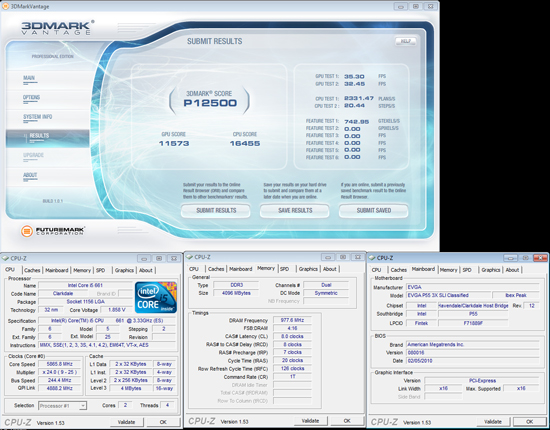
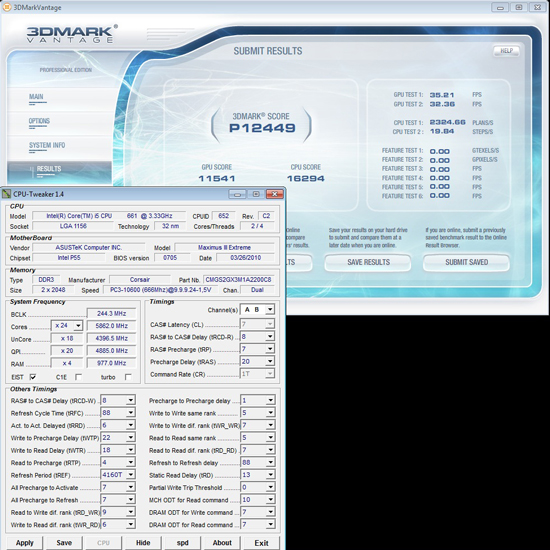
Super Pi 32M next:

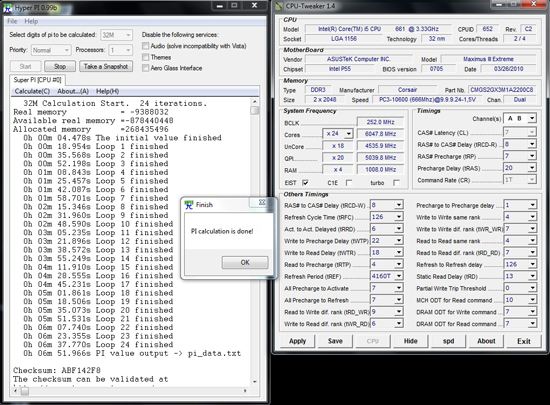
Where ASUS have got things right though is that it’s far easier maxing out a CPU on the M3E than it is on EVGA’s E659 Classified 200. The Classified 200 has a lot more hardware tweaks, but in this instance we found that we had to use those tweaks to keep up with the M£E rather thans surpass it. In fact, you have to take a lot more time making adjustments on the EVGA board to get the same clock speeds as the ASUS M3E in almost every bench. That's why the 32M scores are a little behind on the EVGA E659 - we tired out the OS trying to match the M3E's clock speed in Super Pi. Put simply, the M3E is easier to overclock in most areas.
There’s probably a little room for fine tuning of how the ASUS board posts over 220 BCLK when using higher QPI ratios; certain CPU multiplier ratio’s can’t be engaged from a power cycle, so its a case of setting a low CPU multiplier at first post, re-enering BIOS and then changing the ratio to suit your desired operating frequency. Still, it’s something that only manifests when pushing real hard, we’ve yet to come across a board that does not have some kind of quirk when it comes to increased QPI speeds and booting past 220 BCLK.










22 Comments
View All Comments
Nickel020 - Tuesday, April 27, 2010 - link
Thanks for the reply Raja!I think you got me wrong though, I did not mean to say your benchmarking was sloppy, I meant to say that I fully trust your numbers! AT is one of the few sites that I trust to make a sanity check of their benchmark numbers before posting them^^
The numbers did not really make sense to me before because I did not know what you just explained, but now they do make sense, thanks again :)
Rajinder Gill - Tuesday, April 27, 2010 - link
HiNo worries. When I first saw this it had me scratching my head (and other areas of my body). You caught me at a time where I was in an overly self-protective mood (gotta get some sleep)..lol
later
Raja